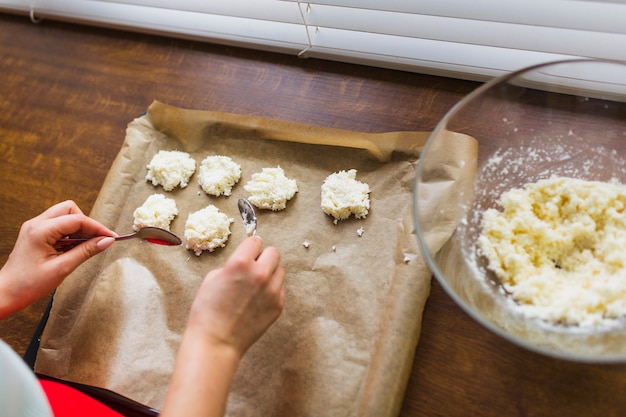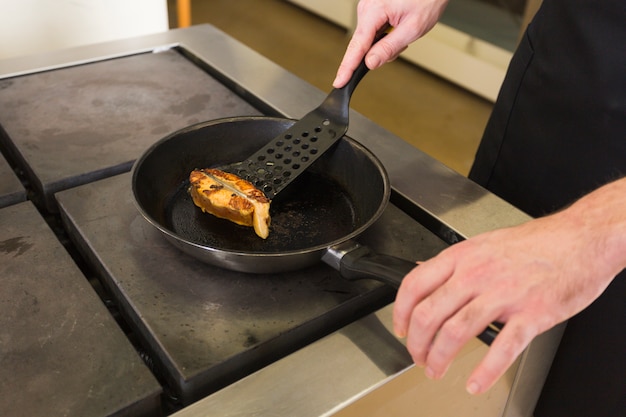Right, let's talk tofu. This humble bean curd, for all its versatility, can be a bit of a culinary enigma, especially when it comes to cooking time. You see, the secret to perfectly cooked tofu isn't just about timing; it's about understanding the different textures you can achieve and how to get there. So, grab your favourite spatula, put on your apron, and let's embark on this tofu adventure together.
Part 1: The Great Tofu Texture Quest

I'll be honest, my journey with tofu wasn't always smooth sailing. I've had my fair share of mushy disasters and rubbery mishaps. But over time, I’ve realised that tofu's texture is a blank canvas, ready to be transformed into whatever culinary masterpiece you have in mind. And that's where the fun begins!
1.1. Firm, Medium, and Silken: The Tofu Trio
First, we need to understand our tofu types. There's firm, medium, and silken – each offering unique qualities that influence how they cook. Firm tofu, your sturdy friend, holds its shape well and is great for stir-fries, grilling, and even baking. It has a distinct, almost chewy texture when cooked. Medium tofu falls somewhere in between, perfect for pan-frying or simmering in sauces. It has a slightly softer texture than firm tofu but still holds its shape fairly well. Silken tofu, the softest of the bunch, is a dream for smoothies, desserts, and creamy dips. Its texture is incredibly smooth and almost melts in your mouth.
1.2. The Power of Pressing
Now, here's a secret weapon for achieving perfect tofu texture: pressing. It's like squeezing the excess water out, allowing the tofu to absorb flavours and become more substantial. Imagine a sponge, soaking up the deliciousness of your marinade! You can use a simple tofu press or improvise with a few plates and some heavy objects. I personally love using a couple of heavy cookbooks! It's worth the effort, trust me!
1.3. A Touch of Salt, a Pinch of Magic
A little trick I've learned: salt your tofu before cooking. It draws out excess moisture and gives it a subtle, salty flavour. You can use regular salt or even use smoked paprika for a smoky twist! I also find that a light sprinkle of cornstarch helps to create a crispier exterior when pan-frying.
Part 2: Mastering the Art of Tofu Cooking

Now, let's dive into the nitty-gritty of cooking our tofu to perfection. Each method has its own nuances, and you'll be surprised by how versatile tofu really is. Remember, the key is to cook it until it's heated through and has a slightly firm texture, but not so much that it becomes dry or crumbly.
2.1. The Stir-Fry Showdown
Stir-fries are where firm tofu really shines. Cube it into bite-sized pieces, press it well, and then pan-fry in a bit of oil until golden brown and slightly crispy. I usually add the tofu towards the end of the stir-fry so it doesn't get overcooked. The goal is to create that wonderful contrast between the crispy exterior and the soft, fluffy interior. The key to a successful stir-fry is to have a hot pan and not overcrowd it. Give the tofu plenty of space to brown nicely.
2.2. Pan-Frying to Perfection
Medium tofu is perfect for pan-frying. Cut it into slabs, press it, and pan-fry it over medium heat until golden brown and crispy on both sides. You can add a little bit of soy sauce towards the end for a flavour boost. For a twist, try marination, dipping the tofu in a mixture of soy sauce, ginger, and garlic before frying. Let the tofu sit in the marinade for at least 30 minutes to allow the flavours to really penetrate. This will give your tofu a delicious depth of flavour and a more robust texture.
2.3. Baking to Glory
Firm tofu can be baked, which might surprise some. Cube it, toss it with your favourite spices and sauces, and bake at a moderate temperature until golden brown and tender. You can even crumble it up and add it to a casserole for a meaty, protein-packed alternative. Remember to bake it on a baking sheet lined with parchment paper to prevent sticking and ensure even browning. The longer you bake the tofu, the more tender and flavorful it will become.
2.4. Boiling, Braising, and Simmering
Medium and firm tofu can also be simmered in soups and stews. They’ll absorb the flavours of the broth and become incredibly tender and delicious. Just remember, don’t overcook them as they might disintegrate! Adding the tofu towards the end of the simmering process is a good way to prevent overcooking and ensure a firm texture.
2.5. The Magic of Deep-Frying
If you're feeling adventurous, deep-fried tofu is a real treat. Cut firm tofu into squares or strips, coat them in cornstarch or a crispy batter, and deep-fry until golden brown and crispy. Beware, it can be a little messy, but the reward is well worth the effort! Make sure the oil is hot enough before adding the tofu to ensure it cooks quickly and evenly. This will prevent the tofu from absorbing too much oil and becoming greasy.
Part 3: A Culinary Symphony of Textures

Now, let's talk about achieving those different textures that make tofu so versatile. We'll explore some techniques and ideas to create a range of culinary experiences.
3.1. Crispy on the Outside, Soft on the Inside
For that perfect crispy exterior and soft interior, pan-frying is your best friend. You want to make sure the pan is hot enough so the tofu starts to brown and crisp up quickly. Don’t overcrowd the pan. Use a spatula to carefully flip the tofu so it cooks evenly. You can also achieve this texture by baking the tofu. Just be sure to use a high enough temperature and bake it for a longer period. This will allow the tofu to crisp up on the outside while remaining soft on the inside.
3.2. The Soft and Tender Touch
If you prefer a soft, pillowy texture, simmering or braising is the way to go. Cook the tofu gently in a simmering liquid for a longer period until it becomes tender and absorbs all the flavours. This technique is great for creating comforting and hearty dishes. Remember to add the tofu towards the end of the simmering process to ensure it doesn't overcook and lose its shape.
3.3. The Crumble for Texture
For salads, sauces, and even vegan burgers, crumbling tofu is a game-changer. You can use firm tofu, press it well, and then crumble it using your hands or a fork. It adds a satisfying texture and a meaty flavour. You can also achieve this texture by freezing the tofu first. After thawing, it will be easier to crumble and will have a more crumbly texture.
Part 4: Cooking Times: A Practical Guide
So, how long do you actually cook tofu? There's no one-size-fits-all answer. It depends on the tofu type, the cooking method, and the texture you desire. Here's a general guide, but remember to adjust the times based on your preferences.
4.1. Cooking Times for Firm Tofu
Firm tofu is the most versatile type and can be cooked in various ways. Here’s a general guide for cooking times:
| Cooking Method | Cooking Time |
|---|---|
| Pan-frying (cubes) | 5-8 minutes |
| Pan-frying (slabs) | 10-15 minutes |
| Baking (cubes) | 20-30 minutes |
| Boiling/Simmering | 15-20 minutes |
| Deep-frying | 3-5 minutes |
Remember, these are just estimates. It's always best to check the tofu with a fork or a knife to make sure it's cooked through and has reached the desired texture.
4.2. Cooking Times for Medium Tofu
Medium tofu tends to be a little softer than firm tofu, so you’ll need to adjust the cooking times accordingly.
| Cooking Method | Cooking Time |
|---|---|
| Pan-frying (cubes) | 3-5 minutes |
| Pan-frying (slabs) | 7-10 minutes |
| Boiling/Simmering | 10-15 minutes |
4.3. Cooking Times for Silken Tofu
Silken tofu is very delicate and is usually not cooked on its own. It's perfect for smoothies, dips, and desserts, where the soft texture is desired. It can be gently warmed in a saucepan, but it doesn’t require long cooking times.
Part 5: The Art of Taste: Flavouring Your Tofu
Let's face it, tofu on its own isn't the most exciting ingredient. But that's where the magic of flavour comes in! It's like a blank canvas, ready to absorb your culinary creations. The key to delicious tofu is to add flavour in a way that complements the texture and the dish you're making.
5.1. The Power of Marinades
Marinate your tofu in a delicious mixture of soy sauce, ginger, garlic, sesame oil, and other spices. The marinade will penetrate the tofu, adding flavour and making it even more succulent. To get the most out of marinating, let the tofu sit in the marinade for at least 30 minutes, or even better, overnight in the refrigerator. This will allow the flavours to really soak in.
5.2. Sauces and Glazes
Use a variety of sauces like teriyaki, hoisin, peanut, or even a simple honey-soy glaze to add flavour and create a beautiful shine. A glaze is particularly effective when used towards the end of cooking to caramelize and add that extra touch of sweetness. Glazes work particularly well with pan-fried or baked tofu, adding a sticky and flavourful coating.
5.3. spices and herbs
Don’t forget the power of herbs and spices! Add cumin, coriander, paprika, turmeric, cayenne, or even a touch of chilli flakes to your tofu dishes for a flavour explosion. You can use a spice rub for added flavour and a crispy texture. Just remember to adjust the amount of spice based on your personal preference.
Part 6: Beyond the Basics: Creative Tofu Dishes
Now that you've mastered the fundamentals, let's explore some exciting tofu recipes that showcase its versatility. These are just a few ideas to get you started, so feel free to experiment and create your own culinary masterpieces!
6.1. tofu scramble
A quick and easy breakfast or brunch idea. Crumble firm tofu, add some chopped vegetables, and sauté in a pan with spices like turmeric and cumin. It's a delicious and protein-packed alternative to eggs. You can also add some nutritional yeast for a cheesy flavour.
6.2. Tofu Stir-Fry
This is a classic for a reason! Combine diced tofu with your favourite vegetables, like broccoli, carrots, and peppers. Add a flavorful sauce, and stir-fry until everything is tender and cooked through. For a truly authentic stir-fry, try adding a splash of oyster sauce or hoisin sauce.
6.3. Tofu Curry
A rich and satisfying dish that's perfect for a comforting meal. Use firm tofu and simmer it in a creamy curry sauce with spices like garam masala, ginger, and garlic. Serve with rice or naan bread. For a vegan curry, use coconut milk instead of dairy cream.
6.4. Tofu Burgers
For a meatless burger, crumble firm tofu, mix it with breadcrumbs, spices, and chopped vegetables, and then form into patties. Grill or pan-fry until golden brown and enjoy with your favourite burger toppings. You can also add some chopped nuts or seeds to the burger mix for extra texture.
6.5. Tofu Sushi
Yes, you can even use tofu in sushi! Press firm tofu, cut it into squares, and then marinate it in a sweet and savory sauce. Use it as a filling in your sushi rolls for a delicious and creative twist. For a more robust flavour, try pan-frying the tofu before adding it to the sushi rolls. It will add a crispy texture and a delicious flavour.
Part 7: Tofu: More Than Just a Substitute
We often think of tofu as a substitute for meat. But I see it as so much more than that. It’s a blank canvas, waiting to be transformed into whatever flavour profile you desire. It’s a versatile ingredient that can be enjoyed in countless ways, from simple stir-fries to gourmet dishes. It can be a star ingredient in its own right, rather than just a replacement.
Experiment with different textures, flavours, and cooking methods to discover your own tofu favorites. Who knows, you might even find yourself reaching for tofu more often than meat!
Part 8: FAQs: Your Tofu Questions Answered
Let's clear up some common questions about tofu.
8.1. Is tofu healthy?
Yes, tofu is a healthy and nutritious food! It's a good source of protein, iron, and calcium. It's also low in fat and calories. It’s a great choice for vegetarians and vegans and can be incorporated into a balanced diet. It’s a good source of plant-based protein, making it a great addition to any diet.
8.2. Does tofu have a strong flavour?
Tofu itself has a fairly mild taste, which is why it's so versatile. It easily absorbs the flavors of other ingredients, making it a perfect blank canvas for your culinary creativity. You can add a lot of flavour to your tofu by marinating it or using flavorful sauces and spices.
8.3. How do I know if tofu is cooked?
Tofu is cooked when it's heated through and has a slightly firm texture. It should no longer be cold or have a raw taste. The colour will change slightly from white to a light golden brown, depending on the cooking method. You can also test it with a fork or knife. It should easily pierce through the tofu, and the texture should be firm and springy.
8.4. Can I freeze tofu?
You can freeze tofu, but it's best to freeze it after pressing. It might become a bit crumbly after thawing, but it's still usable in many recipes. It's great for adding to soups, stews, and sauces, where the texture isn't as crucial. Freezing tofu is a good way to preserve it for longer periods. Just be sure to thaw it completely before cooking.
8.5. How long can I store tofu in the fridge?
Tofu typically lasts for 3-5 days in the fridge. It's best to keep it in its original packaging and store it in a cool, dry place. Once opened, it's a good idea to store the tofu in a sealed container in the refrigerator. This will help to prevent it from drying out and absorbing other flavours in the fridge.
And there you have it! Armed with this newfound knowledge, you're ready to conquer the world of tofu. Don’t be afraid to experiment, try new recipes, and most importantly, have fun! You might be surprised by how much you enjoy this versatile and delicious ingredient.
Everyone is watching

How to Cook Frozen Lobster Tails Perfectly: A Step-by-Step Guide
RecipesLobster. Just the word conjures up images of lavish meals, special occasions, and a taste of luxury. But let's...

Pigs in a Blanket Cooking Time: How Long to Bake for Perfect Results
RecipesAh, pigs in a blanket. Just the name conjures up images of those delightful little parcels of crispy pastry en...

Pork Fillet Cooking Time: How Long to Cook It Perfectly
RecipesPork fillet, or tenderloin as it's sometimes called, is a real favourite in our house. It's so versatile, and...

The Ultimate Guide to Cooking Delicious Frankfurters
RecipesLet's face it, we all love a good frankfurter. It's a classic, simple, and always satisfying. But let's be rea...

Wolf Meat Recipes: A Guide to Cooking Wild Game
RecipesLet's be honest, you don't see wolf meat at your local butcher shop every day. It's a bit of a wild card, but ...
